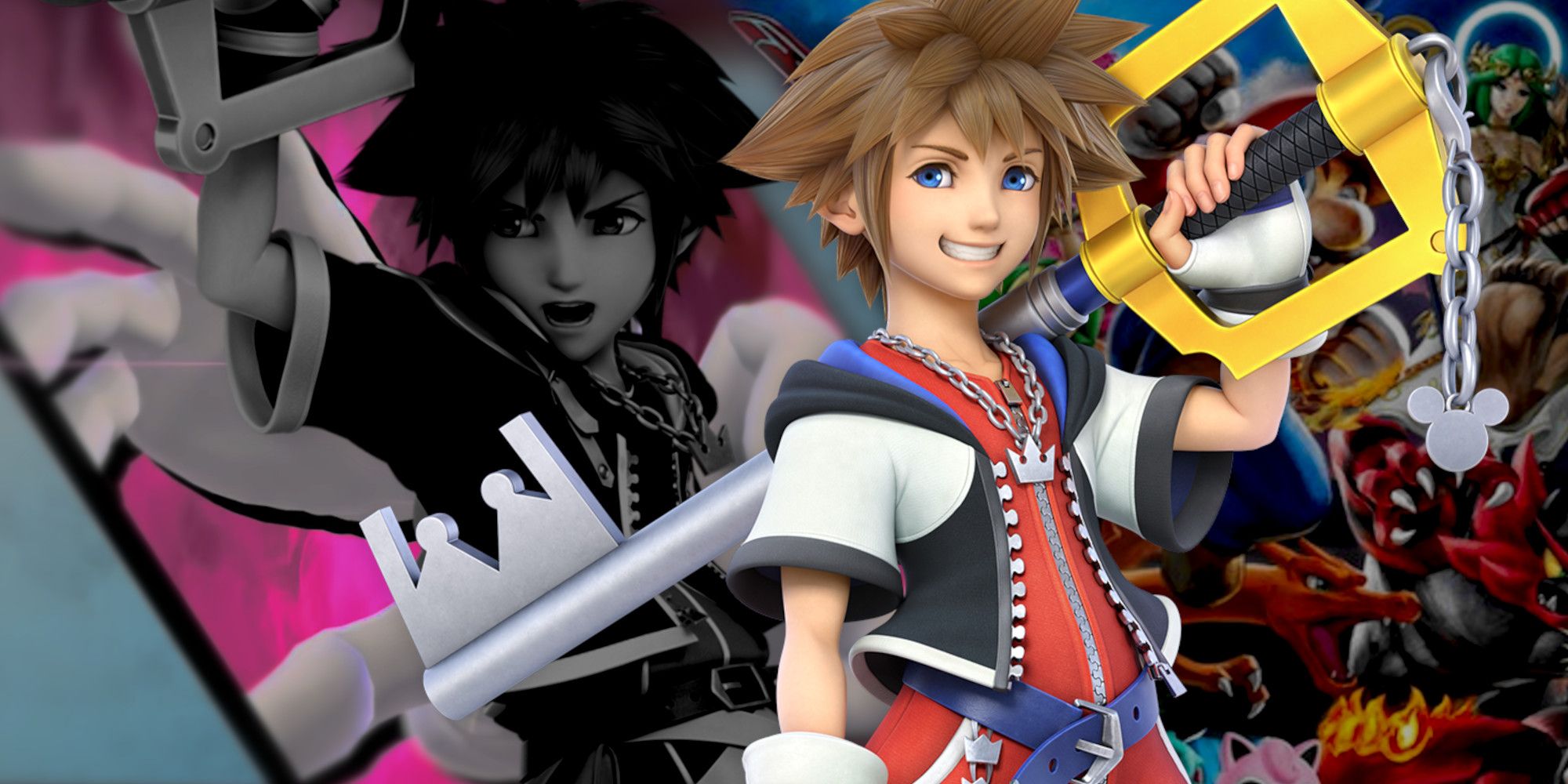
Super Smash Bros. Ultimate reached a new peak in hype levels with the announcement of the final DLC character: Sora from Kingdom Hearts. A character who had been requested for over half a decade, Sora's inclusion was severely hampered by the well-known copyright issues involving Square Enix and the Walt Disney Company's co-ownership of the character. Despite these understandably huge roadblocks, game director Masahiro Sakurai and Nintendo managed to find an agreement with both companies, finalizing Sora's surprise announcement.
Of course, Smash DLC characters come with more than just a new fighter to play with. They also bring with them various references to their original series, and Classic Mode is one common place to hide such Easter eggs. Each battle in Sora's Classic Mode level, "The Light That Clears the Darkness," references a major event in the Kingdom Hearts series, varying from original game content to subtle analogues to the Disney worlds and characters Sora has visited. Every battle ends with a slow-motion defeat of the final enemy with a flashing light effect, much like boss defeats in the series proper.
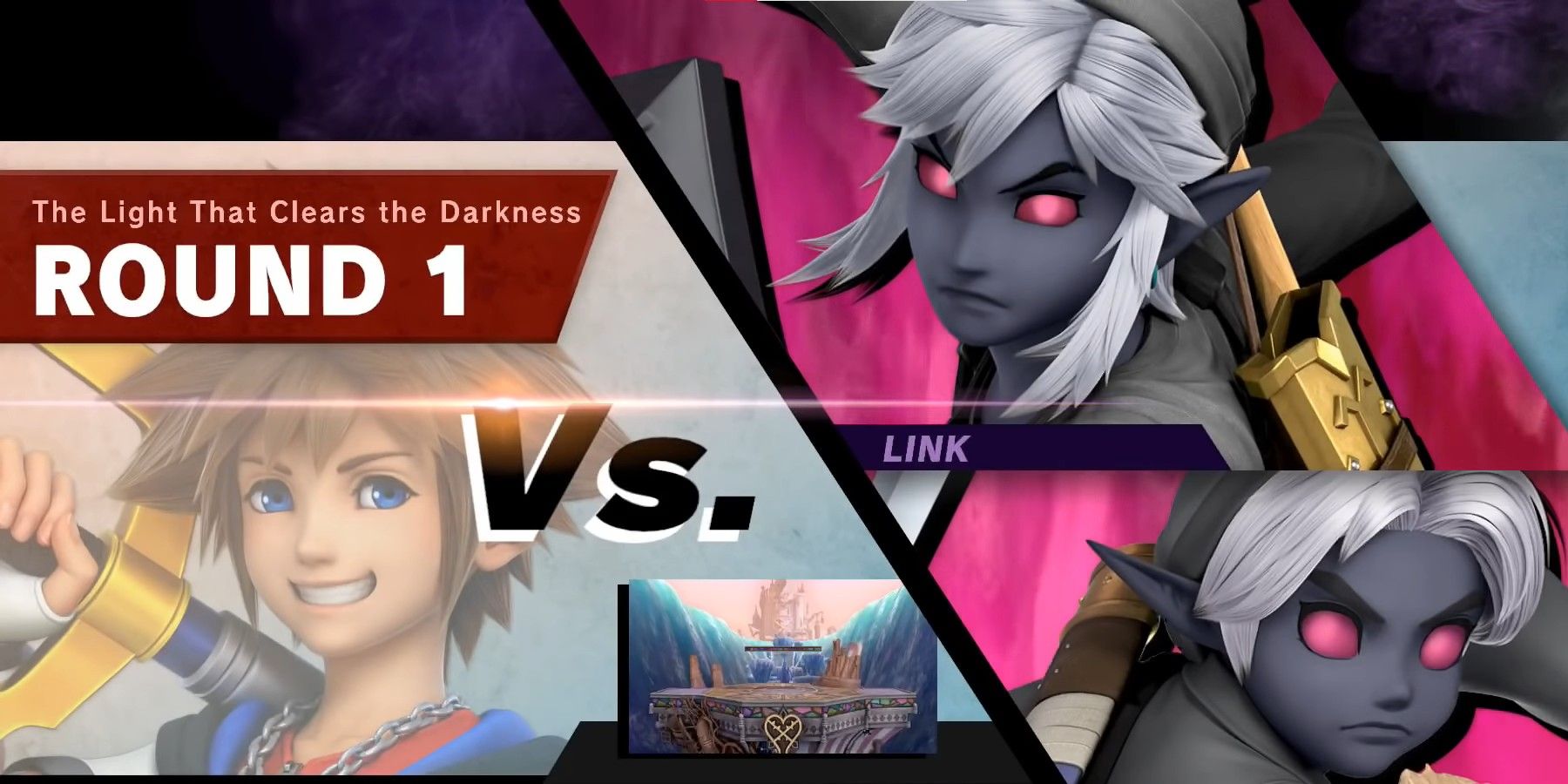
The first stage of "The Light That Clears the Darkness" simply has Sora fight Dark Link and Dark Young Link on Hollow Bastion. It's obvious that Sora is fighting Heartless, the primary enemies of Kingdom Hearts, though what kinds of Heartless that the Links represent is somewhat unclear. The first fight is either a reference to a general battle against Soldier Heartless or a reference to Sora's battle with Riku and his inner Heartless self. As the first round of Sora's campaign, these Links aren't too hard to beat, so the Heartless they represent may not actually mark any specific moment in the lore.
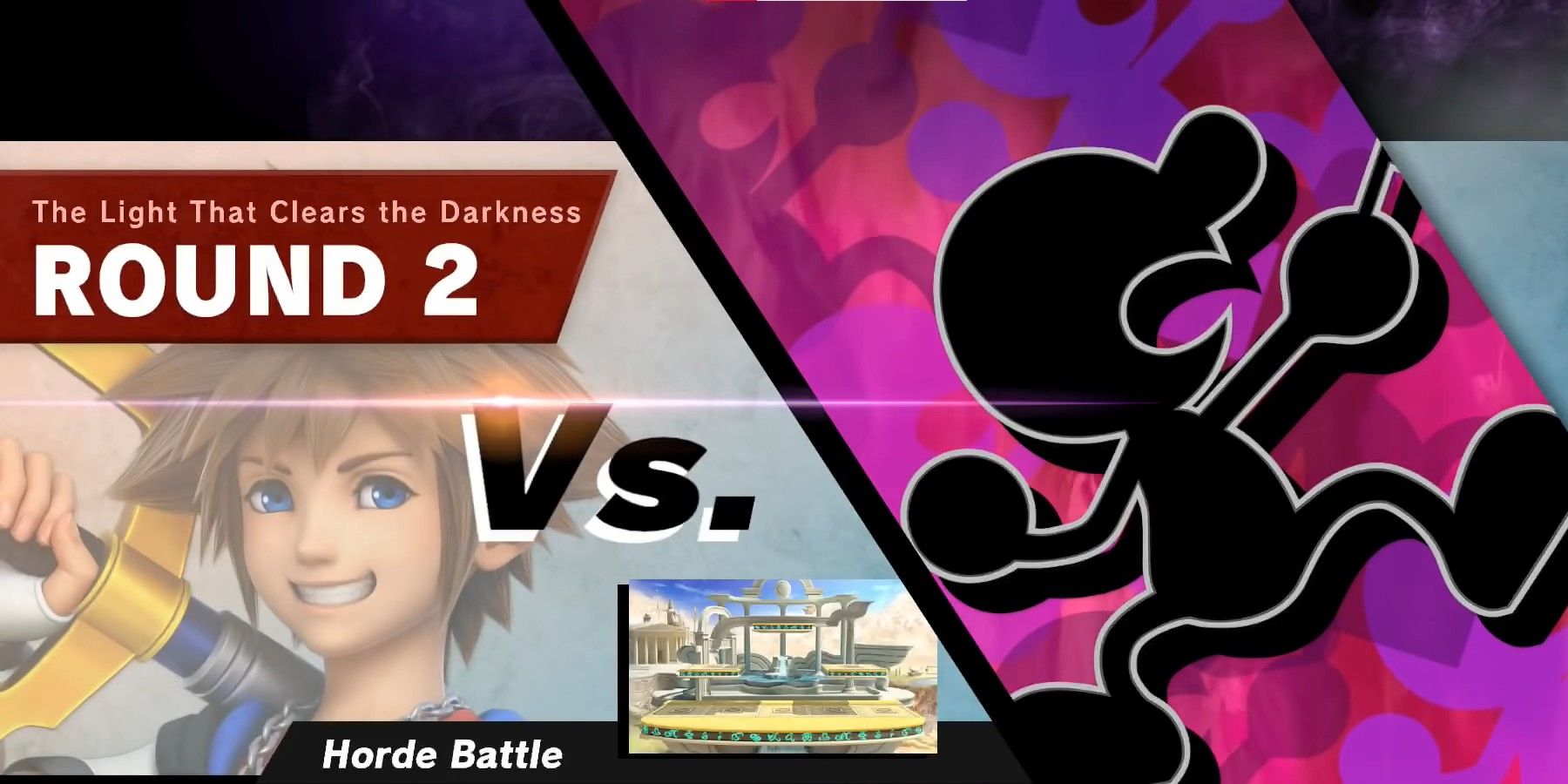
The second stage is another general fight against a horde of Heartless as Sora is forced to slaughter eight Mr. Game & Watch clones on Kid Icarus' Skyworld stage. Heartless tend to come in cartoony and absurd forms, making Mr. Game & Watch a great choice to represent the multitude of strange Heartless Sora and his friends come across. The normal-sized G&W's represent Shadows, the basic enemy of every Kingdom Hearts game, while the larger ones represent their big brother counterparts, the Neoshadow. The gigantic G&W fought at the end represents Darkside, the inner darkness within Sora's heart and the first boss fight of the entire series.
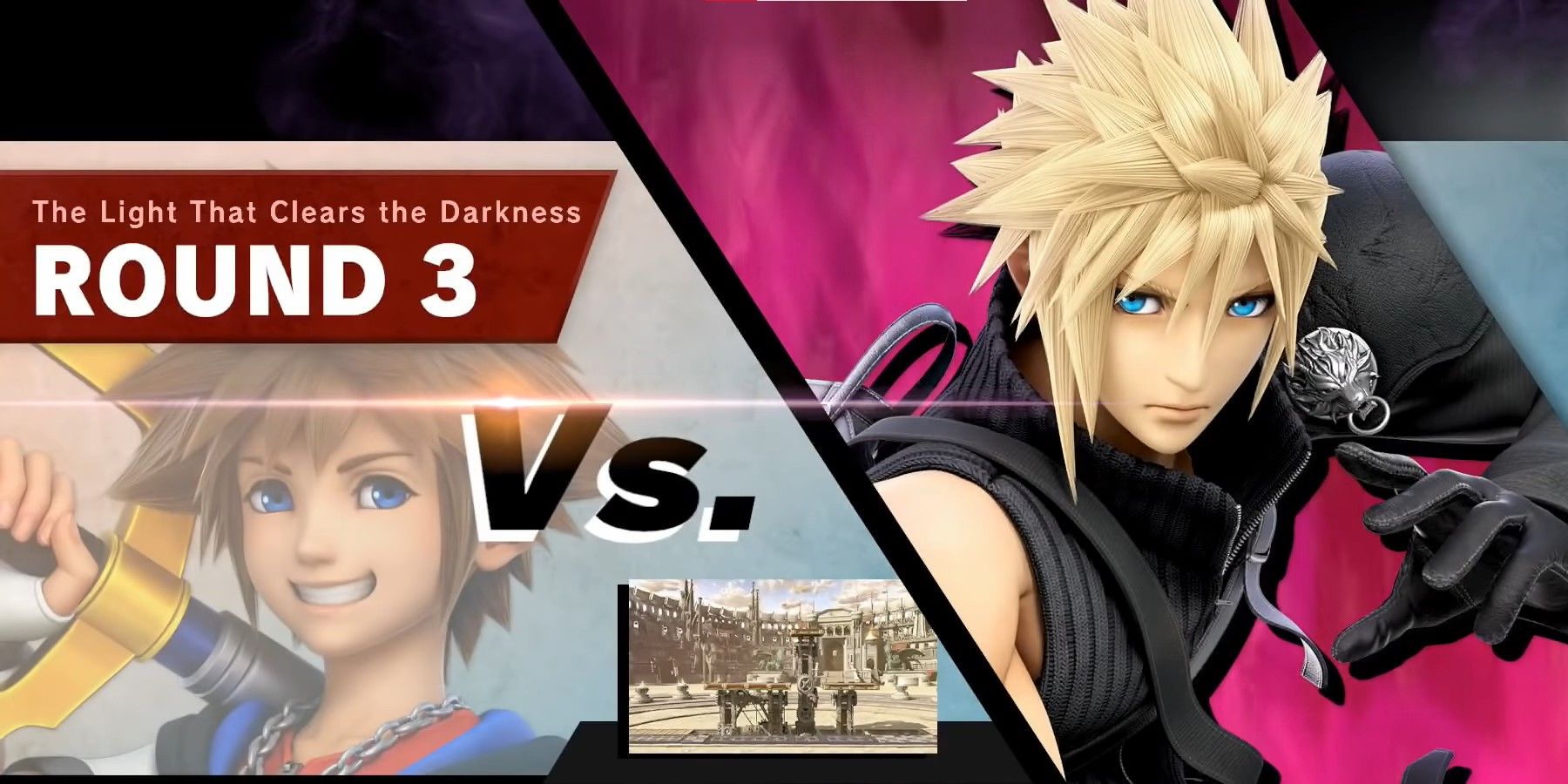
The third stage is when things become more intense, as Sora must fight Cloud in the Fire Emblem Coliseum, a reference to Sora's intense duel against Cloud in the Olympus Coliseum from the Hercules world. Cloud is dressed in his Advent Children garb, which he also wore in his Kingdom Hearts II appearance. The third stage also marks a difficulty spike, which makes sense as Cloud was one of the final challenges in the Coliseum tournament in the original game, being the second-hardest boss after his arch-enemy, Sephiroth.
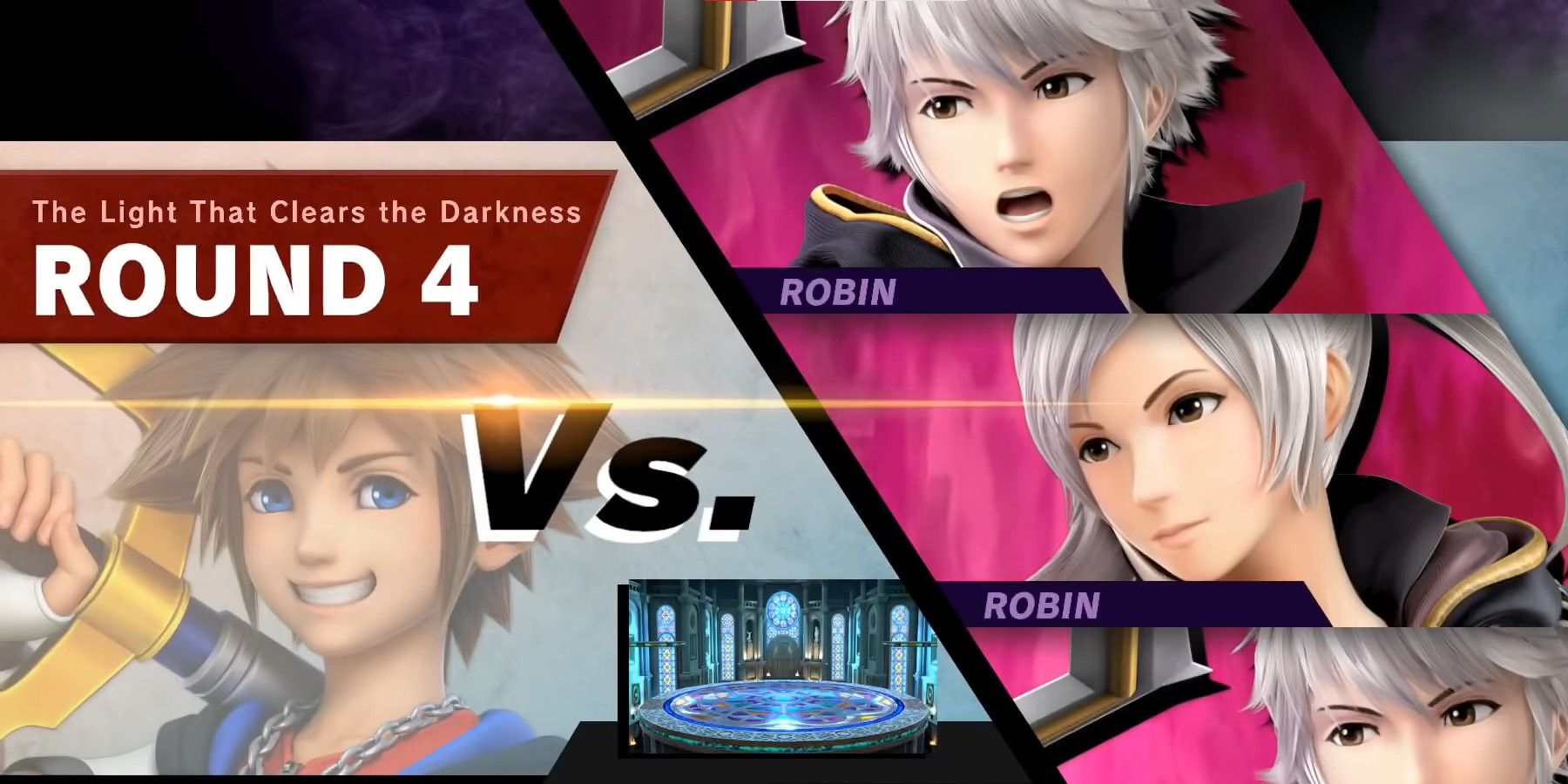
The fourth stage has Sora battle three Robins on the Kalos Pokemon League stage. These most likely represent members of Organization XIII, powerful Nobodies who act as major antagonists of the series. Specifically, female Robin appears to represent the sadistic Larxene, the normal-sized male Robin is Vexen and the larger male Robin stands in for Marluxia. Being excellent fighters with powerful magic in their own right, the Robins and their full dark coats are perfect representatives for members of the Organization. The arena they fight in, the Kalos Pokemon League, is the closest Smash analogue to the Organization's base of operations, Castle Oblivion.
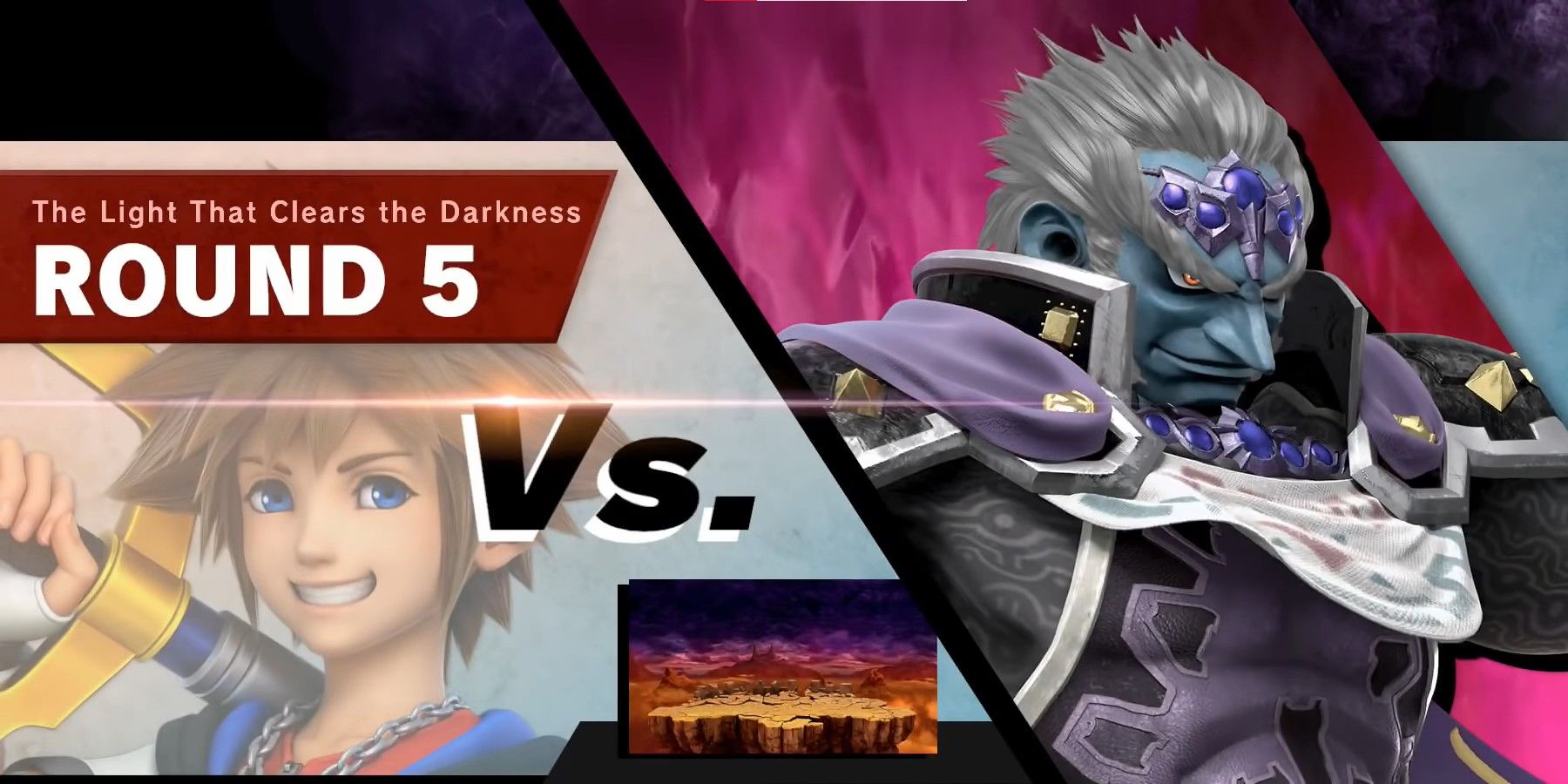
The fifth stage pits Sora against a gigantic Ganondorf on the Find Mii stage of Street Pass Quest, a reference to the Kingdom Hearts incarnation of classic Final Fantasy boss, the Behemoth, who was fought as the final boss of Hollow Bastion. The Behemoth is a giant horned beast with great magical and physical power, not unlike Ganondorf's demonic boar form, Ganon. Although the stage is not Hollow Bastion, the Find Mii stage resembles the final area of the first game, the Dark Depths, while the music that plays is "Destiny's Force," the theme of Darkside and multiple other major bosses.
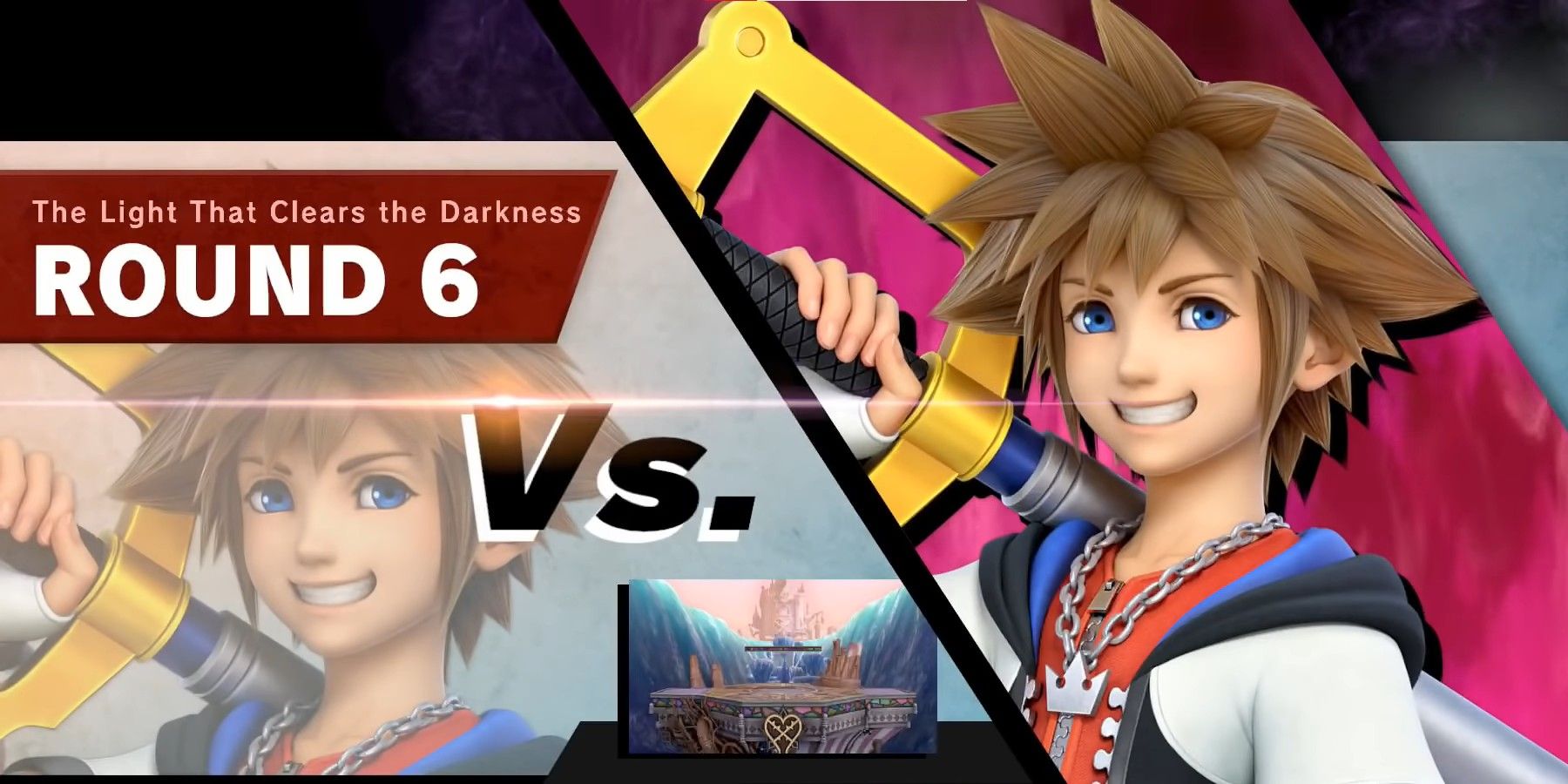
The sixth and final unique stage of Sora's Classic Mode campaign is a mirror match against a Metal Sora in Hollow Bastion. While it could reference the multiple times Sora has faced off against rival counterparts like Riku and Roxas, this particular battle seems to use the player's Sora as a stand-in for Riku in his fight against the Armored Ventus Nightmare in 3D Dream Drop Distance. That particular fight had Riku try to break Sora free from Ventus' armor running amok with darkness. The only challenge after facing off against the Metal Sora is a final battle against both Master and Crazy Hand, which is typical for many Smash Bros. characters in Classic Mode.
0 Comments